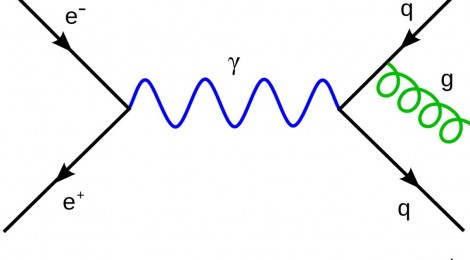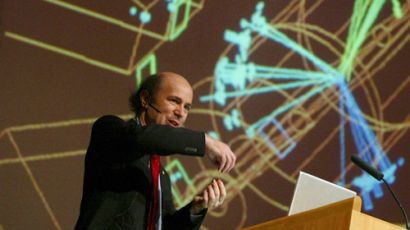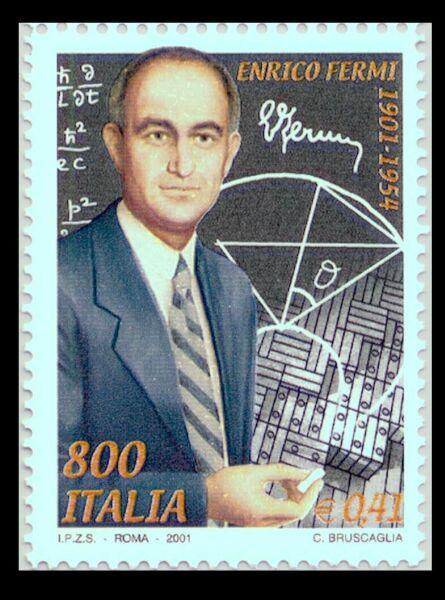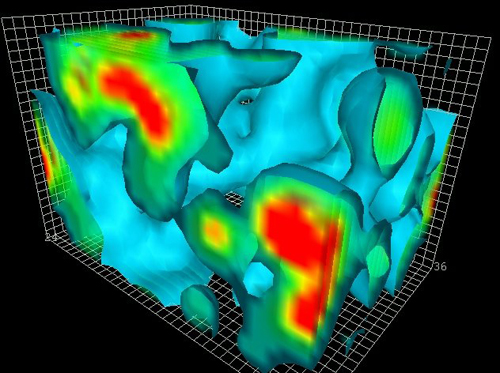
“We Are Like Fish Who Finally Realized We Were Living In Water,” Nobel Physicist Frank Wilczek
“Empty Space” is the primary environment of physical reality, and has the same basic properties everywhere and every when – Wilczek!
 We do our understanding of physical reality and ourselves a great disservice by focusing only on the particles in the atomic environment.
We do our understanding of physical reality and ourselves a great disservice by focusing only on the particles in the atomic environment.
Recent observations have shown that 70 percent of the mass of the universe is made up only of space itself, Prof. Frank Wilczek said in a recent lecture.
It’s time we started paying attention to the possibilities in that 70%.
This is where the ecosystem view and the ecology of atoms starts getting interesting. Ecology is defined as the study of interactions among organisms and their environment, in this case we’ll just call atoms and their constituent parts, the “organisms.” It’s been a long time coming, this ecological view of the atom. But there were some pretty strong hints we needed to be here along the way.
 Enrico Fermi, a 1938 Nobel laureate brother to Wilczek, is credited with what we now see as a prescient quotation regarding the world of the particle physicist, “If I could remember the names of all these particles, I’d be a botanist.” No shit Enrico, botany and ecology go hand in hand and their essence is that of complexity that defies mathematics. Fermi was, by his very nature revealed in that botanical quote, an early player in the game of atom ecology. His reverence for “out of the box ecological thinking” was made even more clear when he said, “There are two possible outcomes: if an experiment confirms the hypothesis, then you’ve made a measurement. If the result is contrary to the hypothesis, then you’ve made a discovery.”
Enrico Fermi, a 1938 Nobel laureate brother to Wilczek, is credited with what we now see as a prescient quotation regarding the world of the particle physicist, “If I could remember the names of all these particles, I’d be a botanist.” No shit Enrico, botany and ecology go hand in hand and their essence is that of complexity that defies mathematics. Fermi was, by his very nature revealed in that botanical quote, an early player in the game of atom ecology. His reverence for “out of the box ecological thinking” was made even more clear when he said, “There are two possible outcomes: if an experiment confirms the hypothesis, then you’ve made a measurement. If the result is contrary to the hypothesis, then you’ve made a discovery.”
Since we know that the matter within the atom provides only a tiny fraction of its occupied space, that “empty space” where those atoms reside becomes really important. And the space between atoms, that much larger part of the atom ecosystem just maybe is where a lot of the magic takes place. This is made especially true when we harken back to Einstein and his E=mc² view of things. Is that empty space filled with matter or energy at any moment, or is the answer dependent on what we are looking for? Or perhaps there is something else in between matter and energy?
Wilczek calls his reductionist view of space the “Grid.” The Grid’s is reduced to a two component system: the “effervescent grid” and the “material grid,” he said.
The effervescent grid is made up of spontaneous activity that occurs between magnetic and electrical fields, he said. Quarks cause disturbances in the field that the field pushes back against, compressing the quarks. Empty space he says “looks like a lava lamp, but what you are actually seeing are the fluctuations in the energy in the gluon fields — a sort of analog of electric and magnetic fields interactions.”
One part of the material grid is the pairs of miniscule particles quarks and antiquarks. When they combine, they produce exothermic reactions, releasing more energy than is initially put in.
“Space fills up with such things, and the only thing that stops it is that when you have a high density being produced, they repel each other and at some point there is no room for more,” he said. “What we perceive as empty space and take for granted as our surroundings is actually full of quarks and antiquarks formed into pockets, which are little molecules, and they are all around us and they effect the way things move.”
Wilczek reported that experiments to his knowledge have not observed strong-weak superconductors, physicists postulate that they exist because they are a valuable explanatory and predictive tool. In the same way that microwaves were theoretically proposed before being observed, strong-weak superconductors explain the results of current theoretical models.
Au contraire mon capitan. Some experiments work very much in this peculiar variable superconducting environment, and with remarkable observations. Filling empty gluon space with hydrogen nuclei where they attain metallic density is the experimental process. That within that “empty space” environment this strange new form of gluon quark matter interacts is clearly shown. The results are very much contrary to the conventional expectations. The discovery data is here though the catching up of the hypotheses remains a chore.
Looking for a bit more? Here’s a video.
There’s a sequel!
